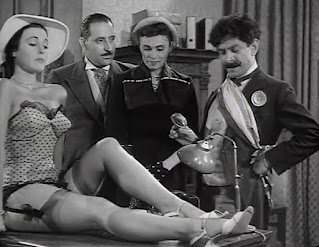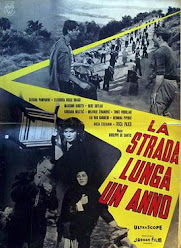Leonardo Sciascia – writer
Books mercilessly expose Italian politics and role of the Mafia
Leonardo Sciascia, novelist, playwright and politician, was born on this day in 1921 in Racalmuto in Sicily. Many of his novels looked at Sicilian life and how the Mafia operates as part of society, and some have since been made into films. He also wrote a book analysing the kidnapping and assassination of Aldo Moro, the prominent Christian Democrat politician and former prime minister. Sciascia was part of an investigation into Moro’s kidnapping and criticised Giulio Andreotti, the prime minister at the time, for his lack of action and for failing to deal with Brigate Rosse, the Red Brigades. When Sciascia was a teenager his family moved to Caltanissetta in Sicily, where he studied writing and literature. He married Maria Andronico, a local school teacher, in 1944 and he himself held teaching positions for the early part of his career, retiring to write full time in 1968. In 1954 he published an autobiographical novel inspired by his experiences as an elementary school teacher. In 1948 his brother committed suicide, which was to have a profound effect on Sciascia’s life. His first work was a collection of poems satirising fascism, which was published in 1950. Read more…
___________________________________________________________
Giotto – Renaissance artist
Florentine genius was first to paint realistic figures
The brilliant 14th century painter Giotto di Bondone, who was known simply as Giotto, died on this day in 1337 in Florence. Although much of his work is no longer in existence, he is remembered as one of the greatest artists of the early Renaissance period. It is believed Giotto was born in about 1267 in Florence but it is not known how he learned to paint with such a sense of space, naturalism and drama. His work represented a crucial turning point in the history of art because he painted lifelike, solid figures and put in fascinating background details. He is believed to be the first artist to make a decisive break with the Byzantine style of painting and draw figures accurately from life. Giotto’s revolutionary style was followed by many other painters later in the 14th century and it is said that he was actually paid a salary by the commune of Florence because of his excellence. Some of his work can be seen in the Uffizi Gallery in Florence, such as his altarpiece, The Ognissanti Madonna, painted in 1310, which is a good example of his ability to paint lifelike people. But Giotto’s most stunning surviving work is the interior of the Scrovegni Chapel in Padova. Read more…
___________________________________________________________
Maria Teresa de Filippis – racing driver
Pioneer for women behind the wheel
The racing driver Maria Teresa de Filippis, who was the first woman to compete in a Formula One world championship event and remains one of only two to make it on to the starting grid in the history of the competition, died on this day in 2016 in Gavarno, a village near Bergamo in Lombardy. De Filippis, a contemporary of the early greats of F1, the Italians Giuseppe Farina and Alberto Ascari and the Argentine Juan Manuel Fangio, qualified for the Belgian Grand Prix in June 1958 and finished 10th. She made the grid for the Portuguese and Italian Grands Prix later in the year but had to retire from both due to engine problems. She managed only six laps in the former but was unlucky not to finish in the latter event at Monza, where she completed 57 of the 70 laps. Although she was at the back of the field, 13 other cars had retired earlier in the race and she would therefore have finished eighth. These were her only F1 races. The following year she turned her back on the sport following the death of her close friend, the French driver Jean Behra, in a crash in Germany. Only a year earlier, her former fiancé, the Italian driver Luigi Musso, had also been killed. Read more…
___________________________________________________________
Manuela Arcuri - actress and model
TV drama star who portrayed woman who killed Mafia boss
The actress and former model Manuela Arcuri, who received accolades for playing the lead role in a truth-inspired drama about a grieving widow who shot dead a gang boss, was born on this day in 1977 in Anagni, an ancient town in southern Lazio. Arcuri portrayed a character based on Assunta ‘Pupetta’ Maresca, who made headlines in 1955 when she walked into a bar in Naples and shot dead the Camorra boss who had ordered the killing of her husband, just three months after they were married. The four-episode drama, aired in 2013 on the Italian commercial TV channel Canale 5, was called Pupetta: Il coraggio e la passione (Pupetta: Courage and Passion). Directed by Luciano Odorisio and also starring Tony Musante, Eva Grimaldi and Barbara De Rossi, the series confirmed Arcuri’s standing as a television actress of note, winning her the award of best actress at the 2013 Rome Fiction Fest. She had appeared by then in leading roles in a number of TV dramas and mini-series, including Io non dimentico (I Don’t Forget), Il peccato e la vergogna (The Sin and the Shame) and Sangue caldo (Hot Blood). Read more…




















